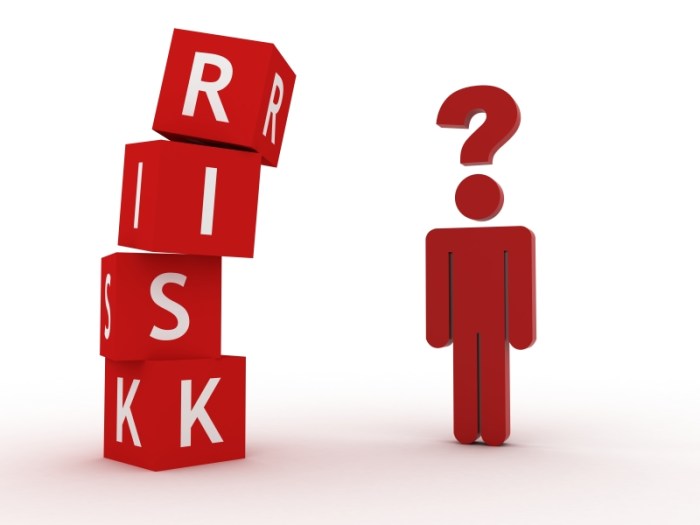
Risk mitigation plans are essential blueprints that help businesses navigate uncertainties while safeguarding their interests. By identifying potential threats and outlining strategic responses, these plans empower organizations to minimize the impact of risks on their operations.
Understanding the components and steps involved in creating a robust risk mitigation plan sets the stage for informed decision-making and effective business management. Whether addressing challenges in innovation, international markets, or operational processes, a well-structured approach is vital for long-term success.
Understanding Risk Mitigation Plans
Risk mitigation plans are essential tools for businesses aiming to minimize potential threats that could disrupt their operations. These plans provide a structured approach to identifying, assessing, and managing risks, ensuring that companies can navigate uncertainties effectively.To craft an effective risk mitigation plan, several key components must be integrated. These include risk identification, risk assessment, risk response strategies, and monitoring and review processes.
Each aspect plays a crucial role in safeguarding the organization against unforeseen challenges.
Components of an Effective Risk Mitigation Plan
An effective risk mitigation plan consists of the following components:
- Risk Identification: This involves spotting potential risks that could affect the business.
- Risk Assessment: Evaluating the likelihood and impact of identified risks.
- Risk Response Strategies: Developing plans to minimize the impact of risks, including avoidance, transfer, acceptance, and mitigation.
- Monitoring and Review: Regularly updating the risk plan to reflect new risks and changes in the business environment.
To develop a risk mitigation plan, businesses typically follow several steps. First, they begin with a comprehensive risk assessment, gathering data and insights from various sources. Then, they prioritize risks based on their potential impact and likelihood. After that, organizations design response strategies tailored to each risk. Finally, they implement the plan and establish a system for monitoring its effectiveness.
Risk Mitigation in Business Innovation

Risk mitigation plans play a vital role in fostering innovation within a business context. When companies proactively manage risks, they create an environment where new ideas can flourish without the constant fear of failure.Innovative business strategies often incorporate risk management principles. For instance, a tech startup may implement agile project management techniques to allow for iterative testing and feedback, reducing the risk of market misalignment.
Similarly, a retail company might adopt a phased rollout for a new product line, enabling them to gauge customer reaction before a full launch.
Assessing Risks in New Business Innovations
Assessing risks associated with new business innovations involves a systematic approach:
- Market Research: Understanding customer needs and market trends to identify potential pitfalls.
- Prototyping: Creating a minimum viable product (MVP) to test assumptions and gather feedback.
- Scenario Planning: Envisioning different outcomes based on varying market conditions and customer reactions.
- Pilot Testing: Launching the innovation on a small scale to measure performance and adapt strategies accordingly.
International Business Risk Management
International businesses face unique risks, including geopolitical instability, currency fluctuations, and cultural differences. Effective risk mitigation plans are essential for navigating these challenges and ensuring sustainable global operations.Many international companies have successfully implemented risk mitigation strategies. For example, multinationals often employ hedging techniques to protect against currency risks. Another approach is establishing local partnerships to understand market dynamics better and adhere to local regulations.
Cultural Differences in Risk Perception and Management
Cultural differences significantly influence risk perception and management in global markets. Organizations must recognize that attitudes toward risk can vary widely across cultures. For instance, some cultures may prioritize risk aversion and thorough planning, while others may embrace calculated risks as part of their entrepreneurial spirit.To effectively manage risks in diverse cultural contexts, businesses should:
- Conduct Cultural Assessments: Understand the cultural landscape where they operate.
- Tailor Communication Strategies: Adjust messaging to resonate with local audiences.
- Incorporate Local Insights: Utilize local knowledge for better risk assessment and decision-making.
Conducting Business Interviews with a Focus on Risk
When interviewing candidates, it’s crucial for organizations to assess their experience and skills in risk management. This ensures that new hires can contribute effectively to the company’s risk mitigation efforts.To evaluate a candidate’s ability to develop and implement risk mitigation plans, organizations should adopt a structured approach. This could involve scenario-based questions that require candidates to demonstrate their problem-solving and critical thinking skills.
Key Questions to Assess Risk Awareness
Here’s a list of key questions that can be used to assess a candidate’s risk awareness:
- Can you describe a situation where you identified a significant risk and how you handled it?
- What strategies have you implemented in the past to mitigate risks?
- How do you prioritize risks in your decision-making process?
- Can you provide an example of a risk management plan you developed?
Risk Mitigation in Job Search Techniques
Job seekers must also consider risk mitigation strategies during their job search process. By being proactive, candidates can avoid common pitfalls and increase their chances of landing a suitable role.To help job seekers, a checklist of common pitfalls in job searching includes:
- Failing to tailor resumes for specific jobs.
- Neglecting to research potential employers thoroughly.
- Overlooking the importance of networking.
Networking serves as a powerful risk mitigation tool, as it provides job seekers with insider information about industries and organizations. Building connections can lead to referrals and opportunities that may not be publicly advertised.
Business Management and Risk
Risk mitigation is a crucial aspect of effective business management practices. Managers play a pivotal role in creating a culture of risk awareness within their teams, which can lead to more informed decision-making and reduced vulnerabilities.To cultivate risk awareness, managers can implement various methods, such as:
- Regular Training: Conduct risk management workshops to enhance team knowledge.
- Open Communication: Foster an environment where team members feel comfortable discussing potential risks.
- Integrating Risk Assessment: Include risk evaluation in routine management decisions and planning sessions.
Risk Mitigation in Marketing Direct
Direct marketing campaigns can pose several risks, from regulatory compliance issues to potential backlash from consumers. To mitigate these risks, marketers must adopt comprehensive strategies that address potential pitfalls.Guidelines for evaluating the success of risk management in marketing strategies include:
- Monitoring Compliance: Ensure that all marketing efforts adhere to legal guidelines.
- Consumer Feedback: Actively seek customer responses to marketing initiatives to identify areas of concern.
- Performance Metrics: Establish clear metrics to measure the effectiveness of risk management efforts.
Understanding consumer behavior is also essential, as it impacts risk management in marketing. Businesses must be attuned to changing consumer preferences and societal trends to mitigate risks effectively.
Business Networking and Risk
Building a strong network is an effective way to mitigate risks for small businesses. Networking can provide opportunities for collaboration and knowledge sharing, helping businesses navigate challenges more effectively.Strategies for establishing connections that reduce business vulnerabilities include:
- Participating in Industry Events: Attend conferences and trade shows to meet potential partners.
- Joining Professional Associations: Become part of groups that align with business interests.
- Utilizing Social Media: Engage with industry peers through platforms like LinkedIn to expand reach.
Collaboration is key in risk-sharing practices. When businesses work together, they can pool resources and expertise to tackle shared challenges.
Outsourcing and Risk Management
Outsourcing business functions comes with inherent risks, including loss of control over quality and potential data security issues. To manage these risks effectively, organizations must implement a robust risk management framework.Successful businesses have navigated outsourcing risks by:
- Conducting Due Diligence: Thoroughly vet potential outsourcing partners to ensure alignment with business standards.
- Establishing Clear Contracts: Define roles, responsibilities, and expectations in written agreements.
- Maintaining Open Communication: Regularly engage with outsourcing partners to address concerns promptly.
A framework for evaluating potential outsourcing partners should include criteria such as:
- Experience and expertise in the relevant industry.
- Reputation for reliability and quality.
- Robust risk management practices in place.
Risk Mitigation in Business Presentations
Effectively presenting risk mitigation plans to stakeholders is essential for gaining their support and ensuring successful implementation. Clear communication is vital in conveying the significance of risk management strategies.To design visuals that communicate risk management strategies clearly, consider using:
- Graphs and charts to illustrate data trends.
- Flowcharts to depict processes and decision paths.
- Infographics summarizing key points in an engaging manner.
Examples of impactful business presentations focused on risk include those that provide real-life case studies illustrating successful risk mitigation strategies in action.
Enhancing Business Productivity through Risk Mitigation
Effective risk management can significantly enhance productivity in businesses. By proactively addressing risks, organizations can minimize disruptions and maintain smooth operations.Risk factors that can impede productivity include:
- Employee burnout due to high-stress environments.
- Operational inefficiencies arising from poorly managed processes.
- Technological failures that disrupt workflows.
To address these factors, businesses should implement risk management practices that foster a positive work environment and improve employee morale.
Risk Management in the Restaurant Industry
The restaurant industry faces unique risks, including food safety concerns, health regulations, and fluctuating customer demand. Mitigation strategies must address these risks to ensure compliance and maintain customer trust.Health and safety regulations play a crucial role in risk management for restaurants. Failure to comply can lead to severe consequences, including fines and reputational damage. Successful restaurants implement rigorous training programs to ensure staff adhere to safety standards.Case studies of restaurants that have successfully implemented risk mitigation plans highlight the importance of proactive measures.
For example, a restaurant may conduct regular audits of food safety practices to identify and rectify potential issues before they escalate.
Resumes and Cover Letters Focused on Risk Management Skills
Job seekers should highlight their risk management experience in resumes and cover letters to stand out to potential employers. Effectively communicating risk mitigation competencies demonstrates a candidate’s value.Examples of effective phrasing include:
- “Developed and implemented risk mitigation strategies that reduced operational losses by 15%.”
- “Led a cross-functional team in identifying and managing project risks, resulting in a 20% improvement in project delivery timelines.”
A template for crafting resumes that reflect a strong understanding of risk management should emphasize relevant experiences and skills, showcasing how the candidate can contribute to organizational goals.
Retail Business and Risk Mitigation
The retail sector faces specific risks, such as inventory management challenges, changing consumer preferences, and economic fluctuations. Effective mitigation strategies are essential for maintaining profitability and customer satisfaction.A step-by-step guide for developing a risk management plan tailored for retail businesses includes:
- Identifying risks unique to the retail environment.
- Assessing the potential impact of each risk on operations.
- Implementing response strategies, such as diversifying suppliers or adopting flexible inventory systems.
Insights on consumer trends also play a significant role in retail risk management. Businesses must stay attuned to changing preferences to adapt their offerings and minimize potential losses.
Sales Management and Risk
Sales processes involve various risks, including loss of leads, miscommunication, and market volatility. Mitigating these risks is essential for maintaining a competitive edge.Techniques for training sales teams to recognize and manage risks include:
- Role-Playing Scenarios: Simulate high-pressure situations to practice risk assessment.
- Workshops and Training Sessions: Provide ongoing education on market trends and risk management strategies.
- Creating a Risk Assessment Tool: Develop a checklist to help sales teams evaluate potential risks in their strategies.
Teleselling and Risk Mitigation

Teleselling presents unique risks, such as customer dissatisfaction and regulatory compliance challenges. To mitigate these risks, businesses should adopt comprehensive training and evaluation processes.Best practices for training telesales representatives in risk management include:
- Providing scripts that include guidelines for addressing potential objections.
- Emphasizing the importance of compliance with telemarketing regulations.
- Implementing a feedback loop to learn from customer interactions.
A checklist for evaluating the effectiveness of teleselling risk mitigation should assess key performance indicators and customer feedback trends.
Sales Training with a Risk Management Focus
Integrating risk management training into sales training programs ensures that sales teams are equipped to navigate potential pitfalls. This approach promotes a proactive mindset when approaching sales opportunities.Examples of role-playing scenarios to teach sales teams about risk identification might include:
- Handling a customer complaint related to a product issue.
- Responding to a price objection in a competitive market.
A resource list of materials to support risk management training in sales should include books, online courses, and industry articles focused on best practices.
Business Security and Risk Mitigation
Business security intersects closely with risk management, encompassing various threats such as theft, cyber-attacks, and workplace safety issues. A comprehensive approach to security is crucial for minimizing risks.A comprehensive list of security risks businesses face includes:
- Data breaches due to inadequate cybersecurity measures.
- Physical theft of inventory or equipment.
- Workplace accidents leading to employee injuries.
Technology plays a significant role in enhancing business security and risk mitigation. Implementing advanced security systems, such as surveillance cameras and cybersecurity protocols, can help organizations safeguard their assets.
Small Business Risk Management
Small businesses encounter specific risk challenges, often with limited resources to address them. Effective mitigation strategies can significantly impact their sustainability and growth.Resources available for small businesses to develop risk management plans include:
- Guidelines from industry associations.
- Online courses focused on risk management practices.
- Consulting services that offer expertise in risk assessment.
Common mistakes small businesses make regarding risk awareness often stem from neglecting to formalize risk management processes or underestimating potential threats.
Solo Professionals and Risk Mitigation
Solo professionals face unique risks, including financial instability and limited support networks. Identifying and managing these risks is essential for long-term success.Strategies for solo professionals to mitigate risks include:
- Building a robust professional network for support and collaboration.
- Creating a comprehensive business plan that Artikels potential risks and response strategies.
- Investing in professional development to enhance skills and adaptability.
A guide for developing a personalized risk management plan should address individual goals, financial thresholds, and potential market volatility.
Strategic Planning and Risk Mitigation
Integrating risk management into strategic planning processes is vital for organizations aiming for sustainable growth. This approach helps identify potential obstacles and prepares businesses for challenges.Methods for conducting risk assessments during strategic planning include:
- SWOT Analysis: Identifying strengths, weaknesses, opportunities, and threats.
- Scenario Analysis: Evaluating different strategic options based on potential risks.
- Stakeholder Input: Engaging various stakeholders in discussions about perceived risks.
Case studies of companies that have successfully aligned risk management with strategic goals highlight the importance of proactive planning.
Team Building and Risk Awareness
Fostering a culture of risk awareness in teams is crucial for organizations striving for resilience. Team-building exercises can promote understanding of risk management principles.Examples of team-building exercises include:
- Workshops focused on problem-solving related to hypothetical risk scenarios.
- Group discussions that encourage sharing experiences with risk management.
- Collaborative projects that require teams to identify and address potential risks.
Leaders can enhance communication about risks by regularly discussing risk-related topics in team meetings and creating a safe space for open dialogue.
Venture Capital and Risk Management
In the venture capital landscape, risk management plays a critical role in evaluating potential investments. Investors assess risks before committing funds to startups and scaling businesses.Startups can prepare effective risk mitigation plans for investors by:
- Clearly outlining market risks and competitive threats in their business plans.
- Demonstrating their understanding of financial risks and funding requirements.
- Providing examples of risk management strategies that will be implemented post-investment.
A checklist for startups can help ensure comprehensive risk assessments are in place when approaching venture capitalists.
Workplace Communication and Risk Mitigation
Clear communication is essential for effective risk management within a workplace. Establishing open lines of communication promotes transparency and enables teams to address risks proactively.Techniques for fostering open dialogue about risks among teams include:
- Regular risk assessment meetings to discuss potential threats.
- Anonymous reporting tools for employees to voice concerns.
- Encouraging feedback and suggestions for improving risk management practices.
A communication plan template that includes risk reporting processes should Artikel how employees can report risks and how management will respond.
Workplace Safety and Risk Mitigation
Developing a comprehensive workplace safety risk mitigation plan is crucial for ensuring employee well-being. This plan should address various safety concerns and establish protocols for emergencies.Legal implications of workplace safety are significant, as non-compliance can lead to penalties and lawsuits. Businesses must stay informed about regulations and implement necessary safety measures.Successful safety programs that minimized risks in the workplace often include regular training, safety audits, and employee involvement in safety initiatives.
Last Word
In conclusion, risk mitigation plans are not just precautionary measures but integral elements of strategic business management. By fostering a proactive culture of risk awareness and employing tailored strategies, organizations can thrive in a competitive landscape while effectively managing uncertainties.
Essential Questionnaire
What is a risk mitigation plan?
A risk mitigation plan Artikels strategies to identify, assess, and prioritize risks in order to minimize their impact on an organization.
Why are risk mitigation plans important?
They are crucial for protecting assets, ensuring compliance, and fostering a resilient business environment by preparing for potential challenges.
How often should a risk mitigation plan be updated?
It should be reviewed and updated regularly, especially after significant changes in the business environment or after incidents that reveal new risks.
Who is responsible for implementing a risk mitigation plan?
Typically, management is responsible, but it should involve input from various departments to ensure all potential risks are considered.
Can small businesses benefit from risk mitigation plans?
Absolutely! Small businesses can enhance their resilience and adaptability by implementing tailored risk mitigation strategies.




